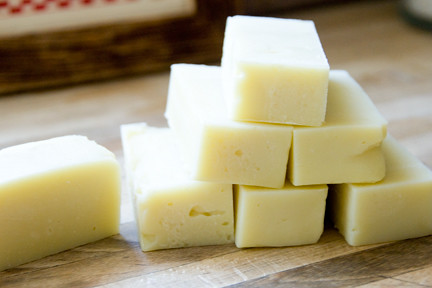Are synthetics overcoming the natural materials?

In 1935, Percy L. Julian (1899-1975) synthesized physostigmine, the compound that was only available in its natural source, the Calabar bean, now used in the treatment of glaucoma. This pioneering research opened a door to widespread usage of chemical materials; however, it also started a “synthetic versus natural” debate on whether and how synthetics substitute natural materials, as well as on their qualities and properties.
Synthetic materials are different in the process they are made, which in turn, offer us more durability at a lower cost. However, raising questions on which synthetic materials are or can be potentially harmful or beneficial are legitimate ones.
Synthetic vitamins (almost) have no support from science
Here is an interesting data that reflects human habit: “use of multivitamin supplements increased among U.S. adults from 30% between 1988 to 1994 to 39% between 2003 to 2006, while overall use of dietary supplements increased from 42% to 53%” (source). Judging by many researches and studies, synthetic vitamins aren’t considered beneficial nutrient-dense supplements. A recent study, which reviewed 23 studies with 4082 participants, confirmed that vitamin D supplement offers no protection against osteoporosis, for instance. However, the production of vitamin supplements didn’t decrease; each country established regulations on production and testing of synthetic vitamins. While human body needs vitamins from natural sources, interested consumers should research the regulations, proposed by their governments, on the risks and qualities of those products, treating supplements as any other medicine, because, as it seems, supplements are beneficial when taken with caution and medical approval.

Natural fabrics needed for health, environment and economy
Chemical-based materials revolutionised clothing given they are durable and affordable, both for consumers and manufacturers. However, synthetic fabrics are not biodegradable and environmentally friendly, and contain toxic materials dangerous to health. While Formaldehyde, a chemical used to increase stain resistance and fasten the colour, was mostly associated with skin-related irritations (supposedly in control after washing the clothes), this chemical is linked to leukemia, and according to the International Agency for Research on Cancer, this chemical is a human carcinogen. A study conducted by the National Institute for Occupational Safety and Health (NIOSH) included 11,039 textile workers. An association between the duration of exposure to formaldehyde and leukemia deaths was found (source).
Other chemicals, such as Phthalates (used in dyes), Nonylphenol Ethoxylates (NPE) (used for laundry detergents), Trichlocarban and Triclosan (used against bacteria) are widely present in textile industry (NPE was found in major brands such as Gap and Burberry). The United Nations designated 2009 as the International Year of Natural Fibres, highlighting that natural fibres are healthy, responsible and sustainable choices, amongst other important qualities.
Synthetic grass promotes health in pets
Numerous studies associated herbicide exposure with cancers and malignant lymphoma in dogs; while one study concluded that herbicide exposure is associated with developing transitional cell carcinoma (TCC) of urinary bladder in Scottish Terriers. The first study showed that “Chemicals were detected in the urine of dogs in 14 of 25 households before lawn treatment (with herbicide), in 19 of 25 households after lawn treatment, and in 4 of 8 untreated households.” The synthetic grass has a lot of benefits: it requires no fertilisers and insecticides, causes no pollution due to mowing, and no confirmation of allergic reactions in pets is associated with synthetic grass. To prevent obesity and overeating in dogs, and to promote both physical and mental health, exercising on appropriate training surfaces, such as synthetic grass, promotes health of dog’s paws, and strengthens joints and sore muscles.

Cosmetic industry demands chemical-free beauty products
The list of toxic chemicals in cosmetic industry and beauty care products grows longer every year. Given many studies confirmed hazardous effects of beauty products, consumers are advised to double-check labels and search for the ingredients list (in accordance to government regulations) or to use homemade natural products. Chemical-rich cosmetic products pose a great threat worldwide, which initiated the Campaign for Safe Products.
Synthetic materials are developing to meet the demands of economy, environment and health. In “synthetic versus natural” debate, research on their benefits and risks is of utmost importance.

Edberg M (2014-10-20 10:48:08). Are synthetics overcoming the natural materials?. Australian Science. Retrieved: Jul 05, 2025, from https://ozscience.com/environmental-science/synthetics-overcoming-natural-materials/
 Follow
Follow
1 thought on “Are synthetics overcoming the natural materials?”
Comments are closed.